
12 Ways to Break Your Filter Bubble and Gain Diverse Perspectives
Former Director of People @ Buffer
It’s nearly inevitable: Humans tend to associate with those who are similar to us—whether politically, economically, racially or otherwise.
This phenomenon, called clustering, is so prevalent that white Americans have 91 times as many white friends as black friends, according to research from the Public Religion Research Institute reported in the Washington Post:
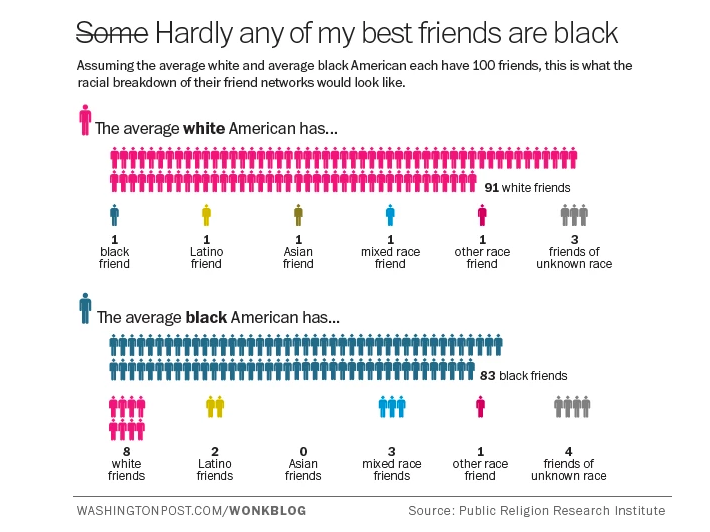
And not only are we more likely to have friends who are similar to us, but many popular social networks employ algorithms that “reward” articles or opinions they think we’ll like. According to WNYC:
“In a company-sponsored study of 10.1 million of the most partisan American users on Facebook, researchers found that people’s networks of friends and the stories they see are skewed toward their ideological preferences, though there are different interpretations as to why. Twitter too: an NYU political scientist found that about two-thirds of the people followed by the median Twitter user in the United States share the user’s political leanings.”
If both our friends and our news sources most likely reflect our existing beliefs, we risk living in a full-body filter bubble.
It can be hard work to break out of this bubble, but in my experience the immense benefits of empathy and understanding is often well worth the effort.
If you’re interested in being more inclusive, how do you get started? Where do you get more diversity into your daily media diet? Here are a few sources and methods that have helped me and others on the Buffer team; I hope they might be a handy resource for you also.
1. The Twitter method: Find and follow new voices
Making a deliberate effort to find and follow new voices on Twitter is one of the easiest and most insightful ways to stretch your boundaries. A series of 26 tweets from Marco Rogers is a great primer on how to make it happen.
I'm annoyed by people who say they want to engage on these complex topics, but swear they can't find good resources to help them understand.
— Marco Rogers (@polotek) May 5, 2014
No. Throw that out. People speak here to express themselves in whatever way they choose. They're not here waiting on you to challenge them.
— Marco Rogers (@polotek) May 5, 2014
You probably won't find them via your friends who are just like you. You do have friends who aren't like you don't you?
— Marco Rogers (@polotek) May 5, 2014
Especially on twitter, since this particular platform makes it dumb easy for you. Find them. Follow them. Listen to them. And read up.
— Marco Rogers (@polotek) May 5, 2014
People will say things that annoy you at best and infuriate you at worst. This is where you decide if you really want to understand.
— Marco Rogers (@polotek) May 5, 2014
You'll know when you've found it. It'll be full of shit that blows your mind and makes you want to argue. Resist that urge. See 3rd step.
— Marco Rogers (@polotek) May 5, 2014
And notice that you can accomplish all of this without asking anything of another person. This journey is on you.
— Marco Rogers (@polotek) May 5, 2014
This the rough outline of the journey I've been on for the last 3 years or so. It brought me further in my thinking than I could imagine.
— Marco Rogers (@polotek) May 5, 2014
B.J. May used Marco’s example and wrote an awesome, in-depth account of how it helped him break out of his filter bubble.
Want to take it even further? Use your share power to elevate lesser heard voices! The tool Twee-Q can show you whether you retweet men or women more, for example.
2. Learn about unconscious bias from Google, Facebook and Microsoft
Unconscious bias is something that every single one of us falls victim to every day, in a million different little ways. But the good news is, we can work on it with awareness and practice.
As large tech companies like Google, Facebook and Microsoft work on building more diverse voices and perspectives on their own teams, they’re often generous enough to share their resources with all of us.
As a result, anyone can check out these incredibly comprehensive resources, complete with tons of video, tools and supplementary worksheets:
It’s so inspiring to see these resources shared, and makes me excited to see how Buffer can contribute to this effort also!
3. Browse the Techies Project to hear underrepresented voices
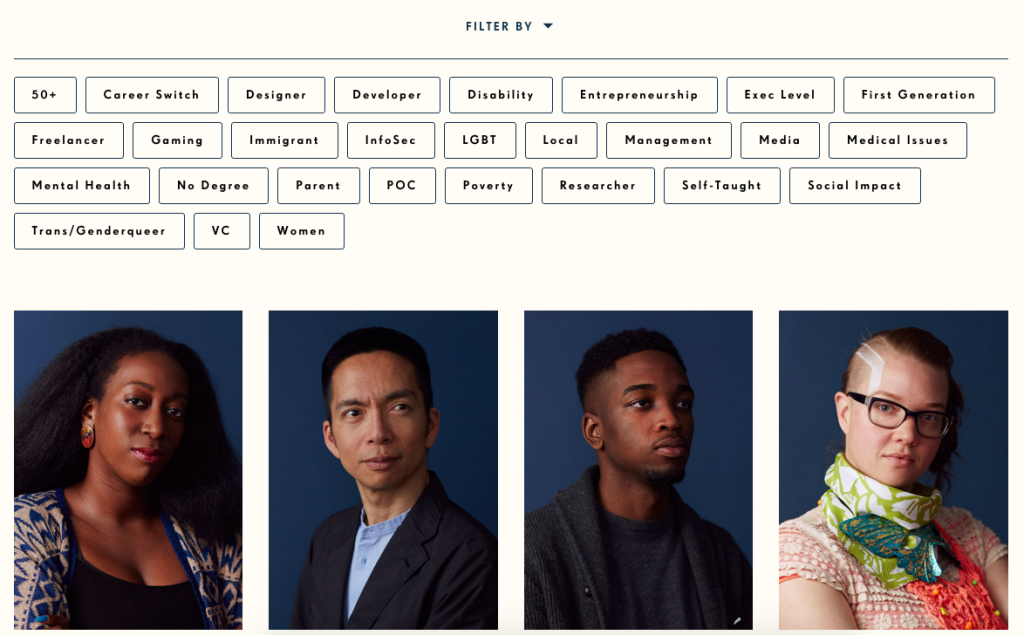
What does a person “in tech” look like? Maybe not what we think.
Techies, a beautiful and in-depth photo and interview project, tells the personal stories and experiences of more than 100 (so far!) underrepresented people in tech.
Its creator, Helena Price, told TechCrunch that her goal is to humanize the often abstract world of tech work and tell unexpected stories.
“There’s an experience that comes from seeing the word ‘techies’ and knowing that it has turned into this kind of derogatory, loaded term that kind of makes people’s skin crawl now,” she said. “Now people hear it and they sort of cringe. Everybody has an image in mind of what that word is. For them, to see that word, expect one thing, and then see a grid of images that don’t look like what they expect is an experience in itself. And if that’s all they see and then they walk away, I feel kind of satisfied.”
With multiple ways to sort and browse, plus in-depth interviews, Techies is a great way to get out of one’s own mindset and into someone else’s, if only for a little while. I’ve only scratched the surface and can’t wait to read more.
4. Listen to the Buffer CultureLab podcast
Have you heard we have a new podcast? Buffer CultureLab is slightly obsessed with happier, more human work, and we make it our mission to hear from lots of different voices on this topic. So far we’ve interviewed scientists, founders, investors, podcasters and more!
We’ve made our podcast available in a few different ways:
Here’s a quick way to explore a recent episode, featuring Dr. Sasha Wright talking about this awesome piece, and get a feel for the podcast:
If you’re into it, we’d love to have your subscription, rating or review!
5.-12. So many great newsletters!
Awesome diversity and inclusion news right in your inbox—what could be simpler? Here are a few of the newsletters I never miss.
5. raceAhead: Culture and diversity in corporate America and more
This new newsletter from Fortune “focuses on the experience of black, brown, Asian, and Native American people in corporate America.” Plus raceAhead has got headlines like “Chewbacca on fleek,” who could resist that?
6. TechUP report: The Diversity and Inclusion newsletter that doesn’t suck
TechUP is a new organization that connects diverse tech talent with companies who believe diversity is an advantage, and that inclusive teams are stronger, smarter, and better. Their weekly email “for badass diversity and inclusion champions in the workplace” has quickly become some of my required reading.
7. DiversityHackers: Advocating for a more diverse engineering and technology culture
Buffer is proud to be a sponsor of DiversityHackers, which is put together by a community of engineers and entrepreneurs “who believe the best teams have people from multiple genders, ethnicities, educational backgrounds, sexual orientations, abilities, families and more.”
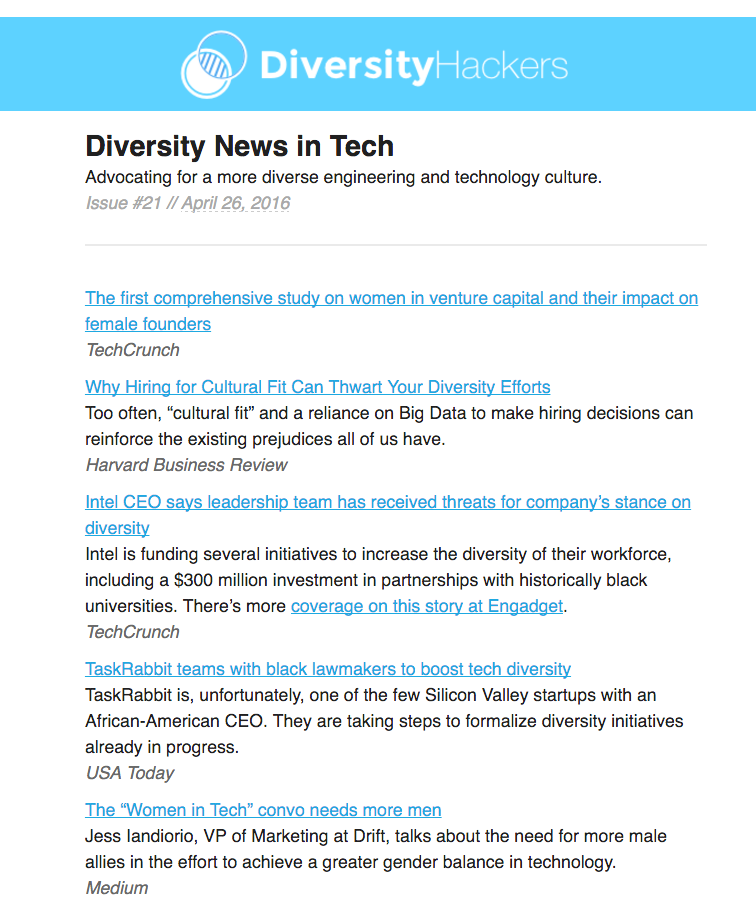
It inspires a slew of wild tab-opening every week at Buffer. See past newsletters or sign up here!
8.Geena Davis Institute on Gender in Media:
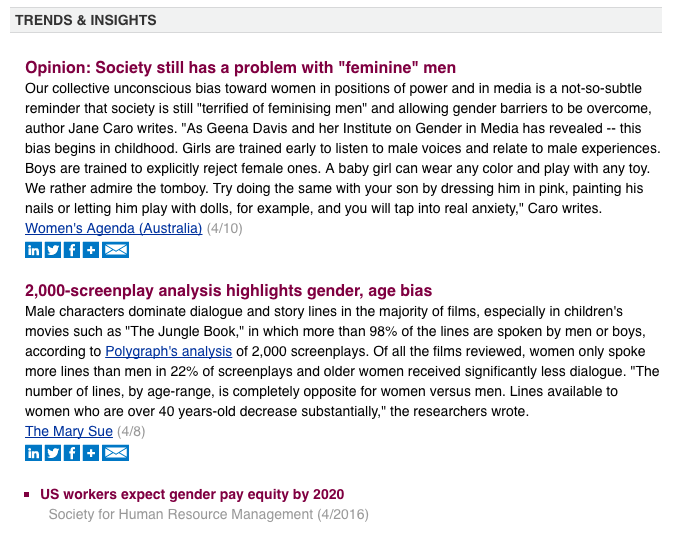
We’ve written before about the genius of Smartbrief, which boasts more than 225 unique newsletters chock full of curated news and information, broken down into 40+ topics.
The Smartbrief I’m most exited for in my inbox every week is the newsletter curated in partnership with the Geena Davis Institute on Gender in Media.
It’s a weekly snapshot of stories about gender in the media with a goal of creating positive images of girls and women in media and entertainment.
9. Fairygodboss:Curated to provoke thought, inspiration and laughter
Fairygodboss helps women get the scoop about companies and jobs from other women, through community reviews and crowdsourced information The site and newsletter are a place to discuss work-life balance, working motherhood and find women to help you, wherever you are in your career.
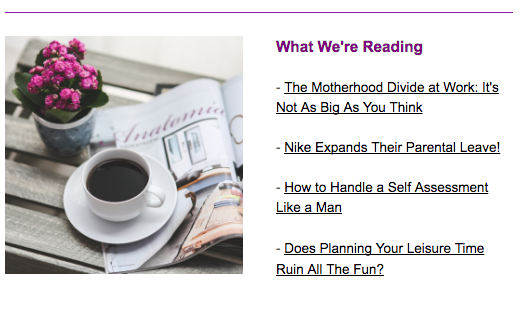
10.POCIT: People of Color in Tech
POCIT, or People of Color in Tech, highlights the achievements of ‘people of color’ within tech and startups to inspire the next generation. Their newsletter is so beautiful and also includes a great job board.
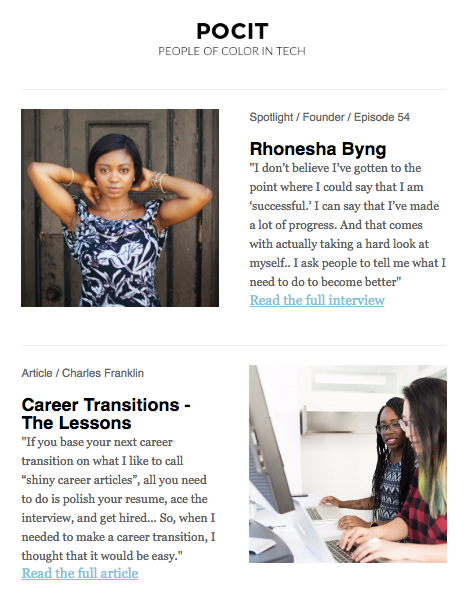
11.Revision Path
Our podcasting pals at Revision Path focus on showcasing some of the best black graphic designers, web designers, and web developers from all over the world. Now with hundreds of interviews, they’re fleshing out their written content, too—which means a newsletter chock full of stories, events, opportunities and community.
12.Gender Avenger: Ensure women are always part of the public dialogue
Gender Avenger exists to make sure all-male panels become a thing of the past. Their goal is to build a community that ensures women are represented in the public dialog, and their newsletter is full of thought-provoking pieces and inspirational women.

A few other resources we’ve passed around lately at Buffer:
- Human: The Movie
- White Privilege: Unpacking the Invisible Knapsack
- Do You Live in a Bubble? Take the Quiz
- The Code Switch podcast
Our inclusivity Slack room is always filled with great links, and I’m happy to pass them on if they’re helpful!
Over to you
It would be awesome to hear about the resources and methods that help you break out of the filter bubble and hear new perspectives. Share with us in the comments if you like!
Top photo by WOCinTech
Try Buffer for free
140,000+ small businesses like yours use Buffer to build their brand on social media every month
Get started nowRelated Articles

How the Buffer Customer Advocacy Team set up their book club, plus their key takeaways from their first read: Unreasonable Hospitality by Will Guidara.

In this article, the Buffer Content team shares exactly how and where we use AI in our work.

Here we go again. If you work in social media, it’s nothing new to adapt and change your strategy based on the ever-changing algorithms and the rise and fall of social networks. (Who else was on Vine? 🙋🏻♀️) But, of course, we wish you didn’t have to. The latest wave for social media marketers and creators is that TikTok might be banned in the U.S. The short-form video app has become one of the most widely-used social media platforms and is credited with impacting trends and cultural shifts.